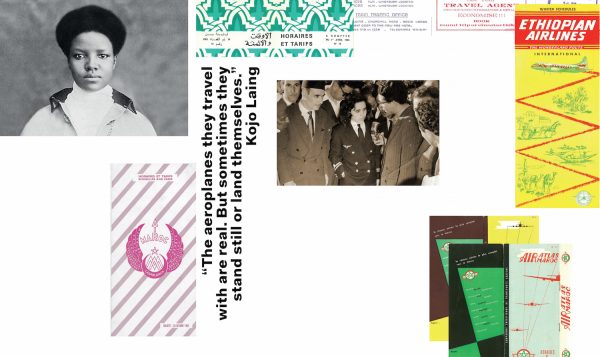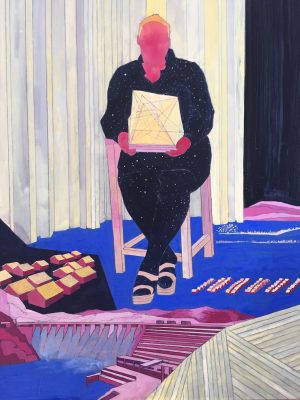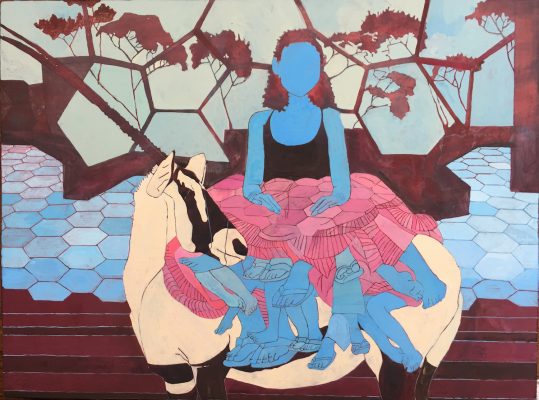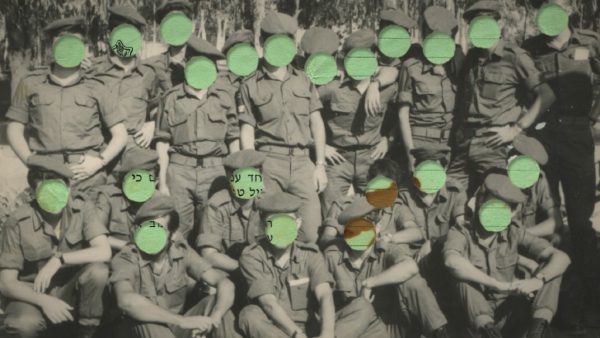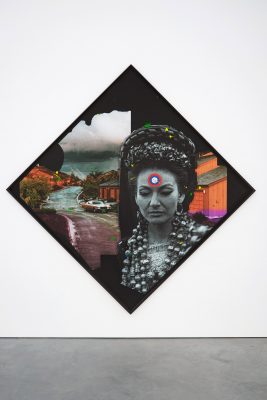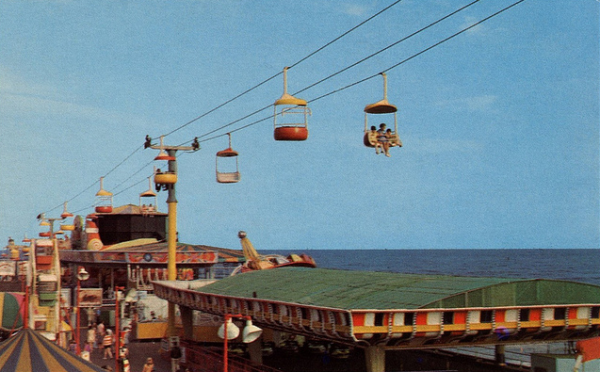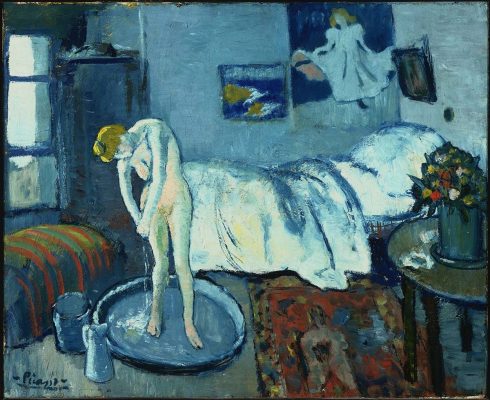In The Showroom’s Women on Aeroplanes, three artists explore the untold contributions made by black women to transnational liberation movements. New work by Lungiswa Gqunta, Pamela Phatsimo Sunstrum and Emma Wolukau-Wanambwa addresses the ‘herstories’ of political struggles while questioning the mechanisms which erase such women from the record. Co-curated by The Otolith Collective, these responses make up the London iteration of an eponymous international project which spans two years and five cities (Berlin, Lagos, Warsaw, Beyreuth and London).
Emma Wolukau-Wanambwa’s installation presents research into the life and political activities of Amy Ashwood Garvey (1897–1969), a pan-African activist, co-founder of Notting Hill Carnival and the Universal Negro Improvement Association (UNIA) as well as founder of the Afro-Womens’ Centre in London. (Ashwood Garvey’s oft-cited marriage to the radical leader Marcus Garvey is noticeably omitted from the exhibition’s overview, perhaps a wry comment on the common the practice of introducing famous woman by association to their husbands.) Numerous archive folders documenting her life and work are set up across five research stations in the gallery. Meticulously labelled in handwritten black ink, the folders contain newspaper clippings of Ashwood Garvey posing amongst leaders of soon-to-be independent African countries in the 1940s – including Kwame Nkrumah (Ghana) and Jomo Kenyatta (Kenya) – or addressing crowds in Trafalgar Square, as well as copies of her correspondence with many of the 20th century’s major black political figures (W.E.B. Du Bois, C.L.R. James and George Padmore amongst others). Textual interjections by the artist, including annotations scribbled onto the material and copies of correspondence with archive librarians, offer a window alongside into the painstaking process of rescuing this material from obscurity. The archive addresses a clear deficit in the information commonly available on Ashwood Garvey’s remarkable life. Compare her former husband’s Wikipedia entry with hers: it’s an impoverished account given the extent of her transnational enterprises, glimpsed here via Wolukau-Wanambwa’s research. As a backdrop to this injustice, five brightly coloured pillars of text hang on the facing wall like banners proclaiming Ashwood Garvey’s virtues and accomplishments as the ‘most travelled’ black woman to date, a ‘great daughter’ of the Western world, and one whom pan-Africanism owes much to.
Separated by a dividing wall from Wolukau-Wanambwa’s archive, Lungiswa Gquntwa’s installation is made up of a trailing canopy of tangled barbed wire that is bound in strips of pale green cloth. Along the wall, a series of line drawings on paper are displayed, in which the motif of barbed wire repeats, intermingled in various arrangements with tally marks or the bars of musical notation. Connoting the violence of borders and separation barriers, the barbed wire makes reference to the experience of political exile and segregation faced by many in Gqunta’s home, South Africa. The artist’s ongoing exploration of structural violence and the legacies of colonialism converge here with the feminised task of healing in the face of everyday violence – as in the laborious bandaging of barbed wire. The drawings also present a clue as to the exhibition’s wider theme of decolonising historical records, as they question the nature of how cultural information is recorded and shared. In one image, the line of barbed wire tracks the path of the musical bars before appearing to coil off into a spiralling mess in the blank space beneath: a visual reflection of the discordance of Western musical notation spliced with oral traditions and freestyle forms like jazz. Drawing a comparison between music and historical knowledge more generally then, the work suggests the possibility of breaking free of violent frameworks which cannot contain the collective voices and histories of colonised peoples.
Covering the exterior walls of the gallery is a mural by Pamela Phatsimo Sunstrum depicting a town in Botswana, Serowe. Below an expansive powder-blue sky, a strip of red earth is crisscrossed by little houses and compounds. Floating among the clouds are the words of the South African writer Bessie Head (1937–86): ‘I am building a stairway to the stars. I have the authority to take the whole of mankind up there with me. That is why I write.’ A town not far from Sunstrum’s own birthplace, Serowe is a significant site for Head – the place she spent much of her life, in exile from South Africa, and the setting for her most celebrated novels. The child of an illicit interracial partnership in 1930s, Head was raised in an orphanage and suffered many hardships, which culminated in the statelessness incurred by her involvement in anti-apartheid struggles. Perhaps most acutely for Head, and significant given the context of the exhibition, was the lack of public recognition for her talent as a writer, and the erasure of her contribution to African literature as a whole. Sunstrum’s mural appears as a curative shrine: a direct and accessible gesture of homage to a talented woman who suffered, underappreciated in her lifetime, and to the beauty of the land in which she lived.
